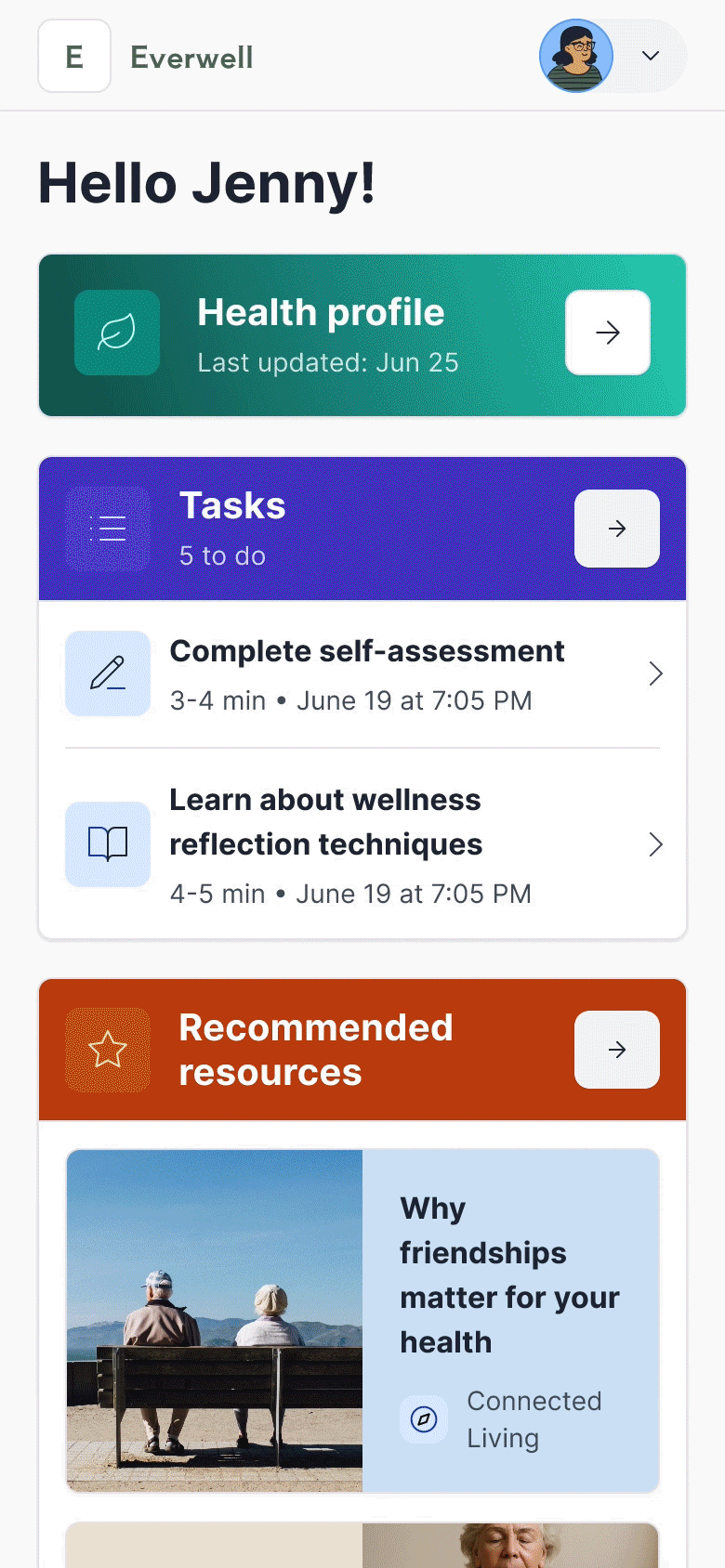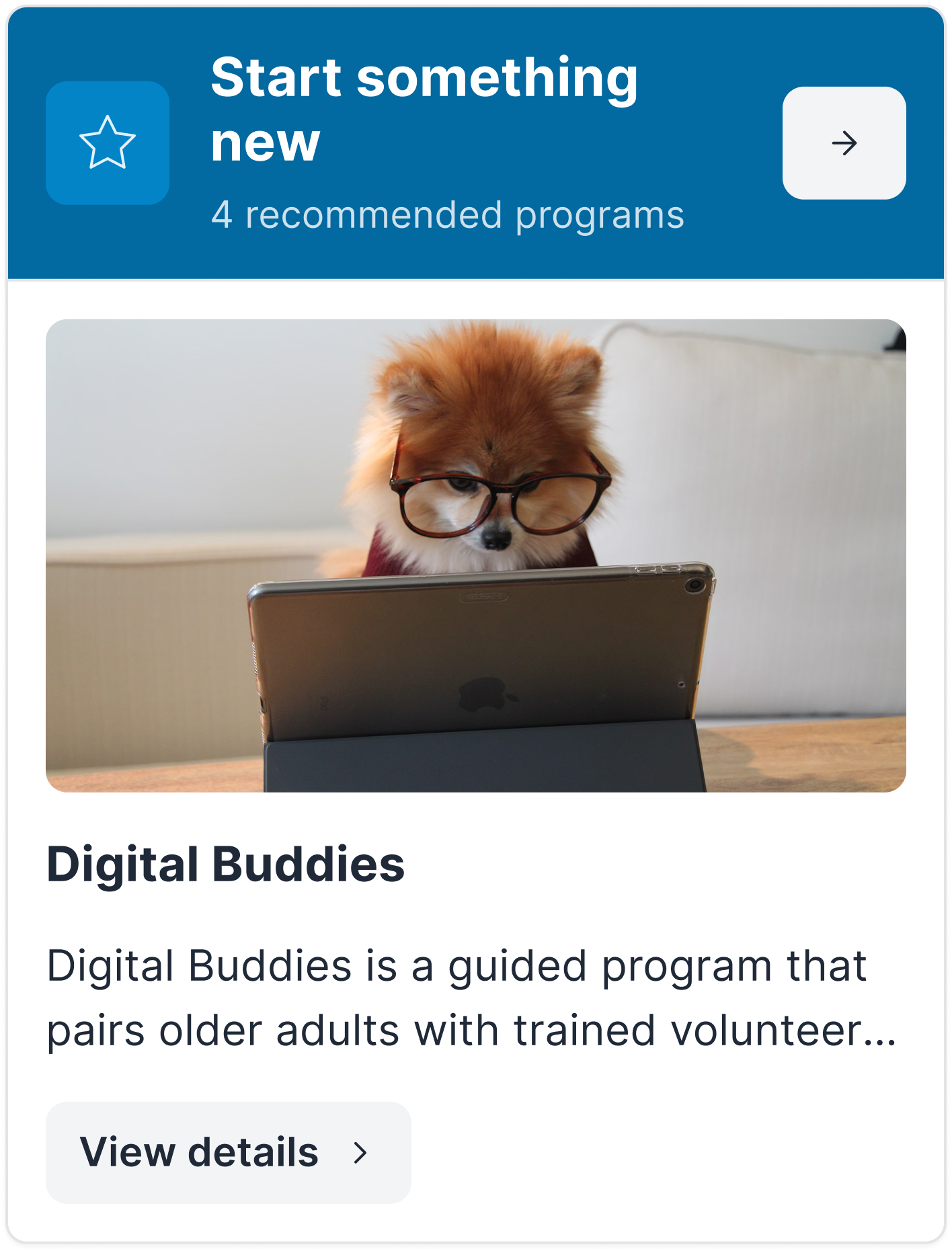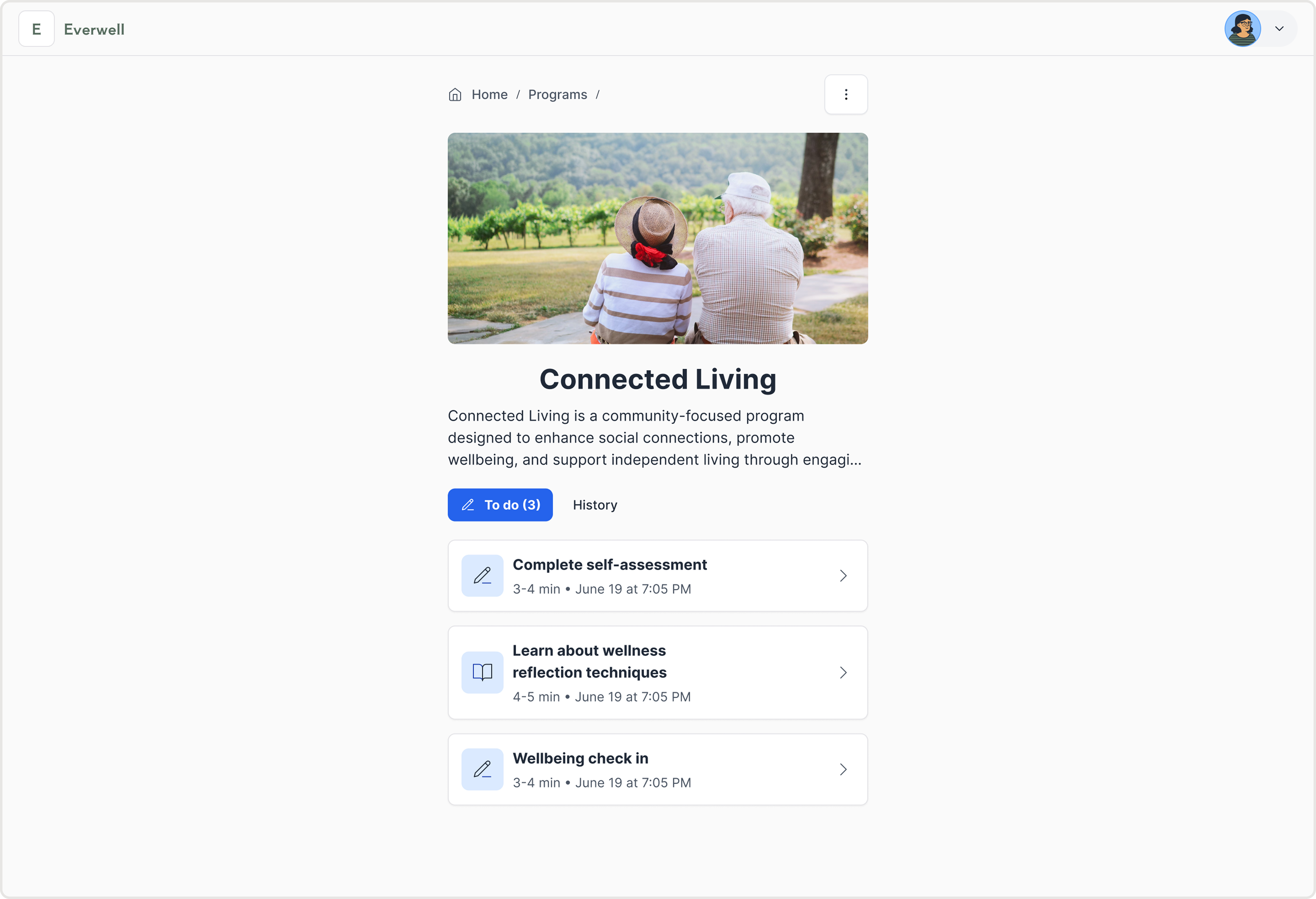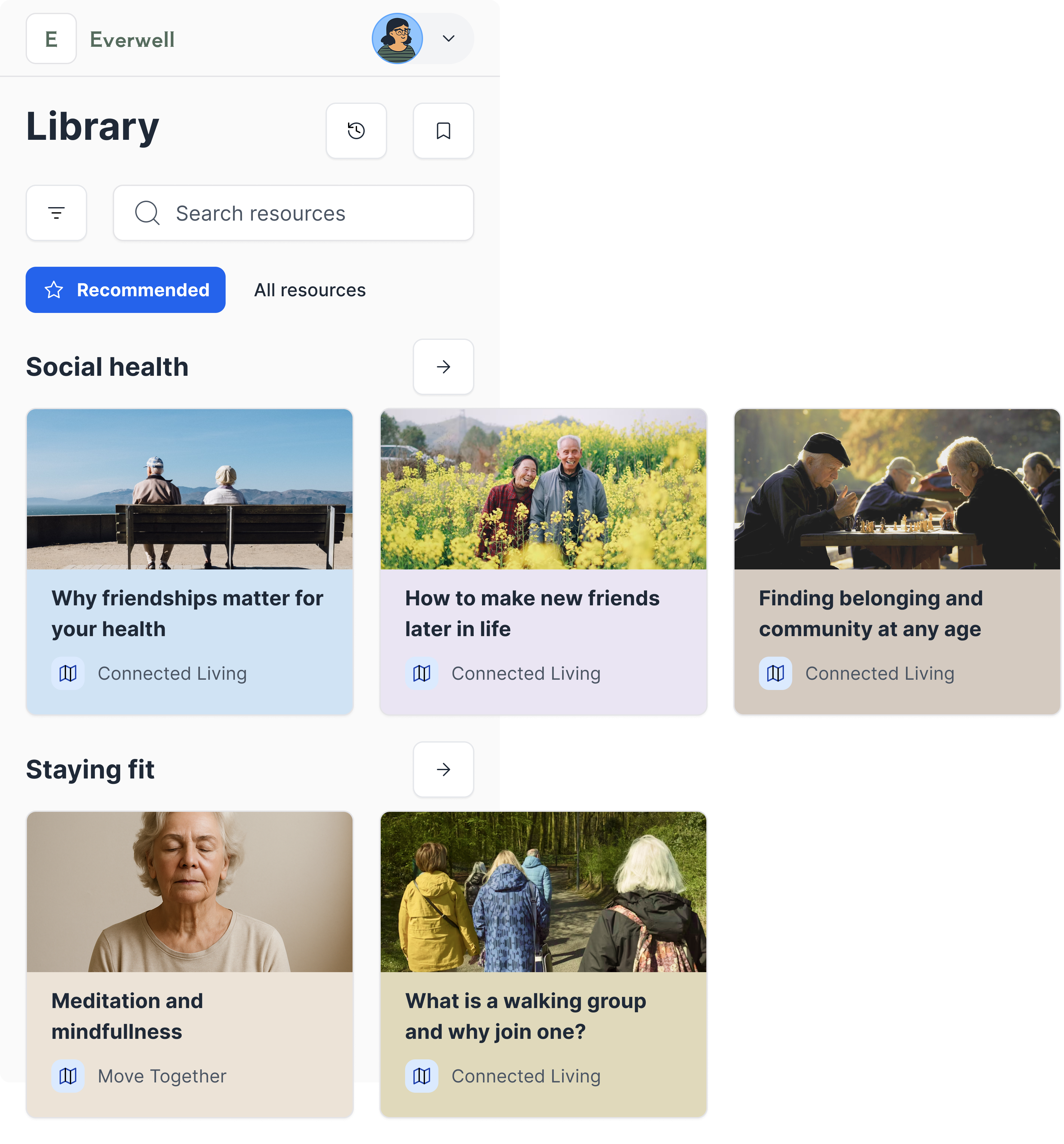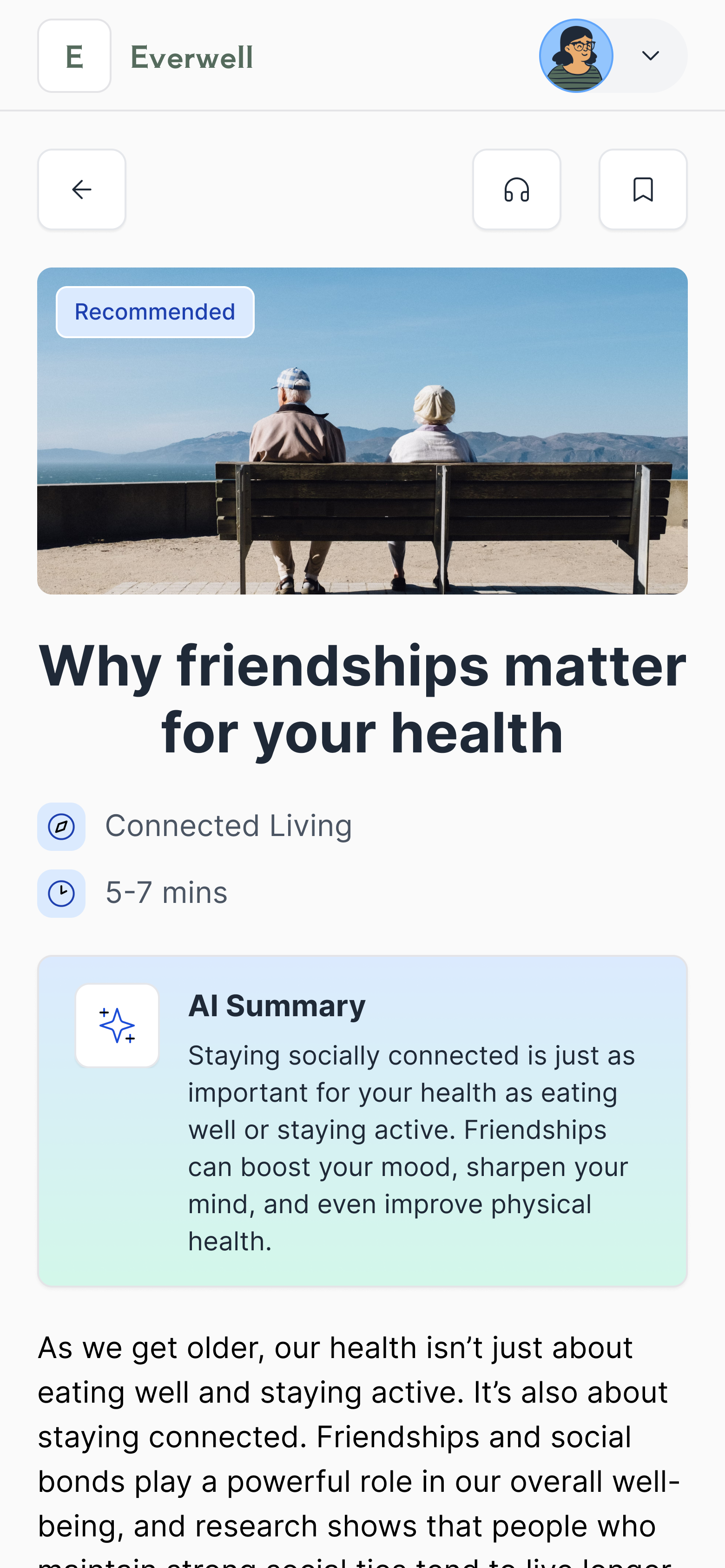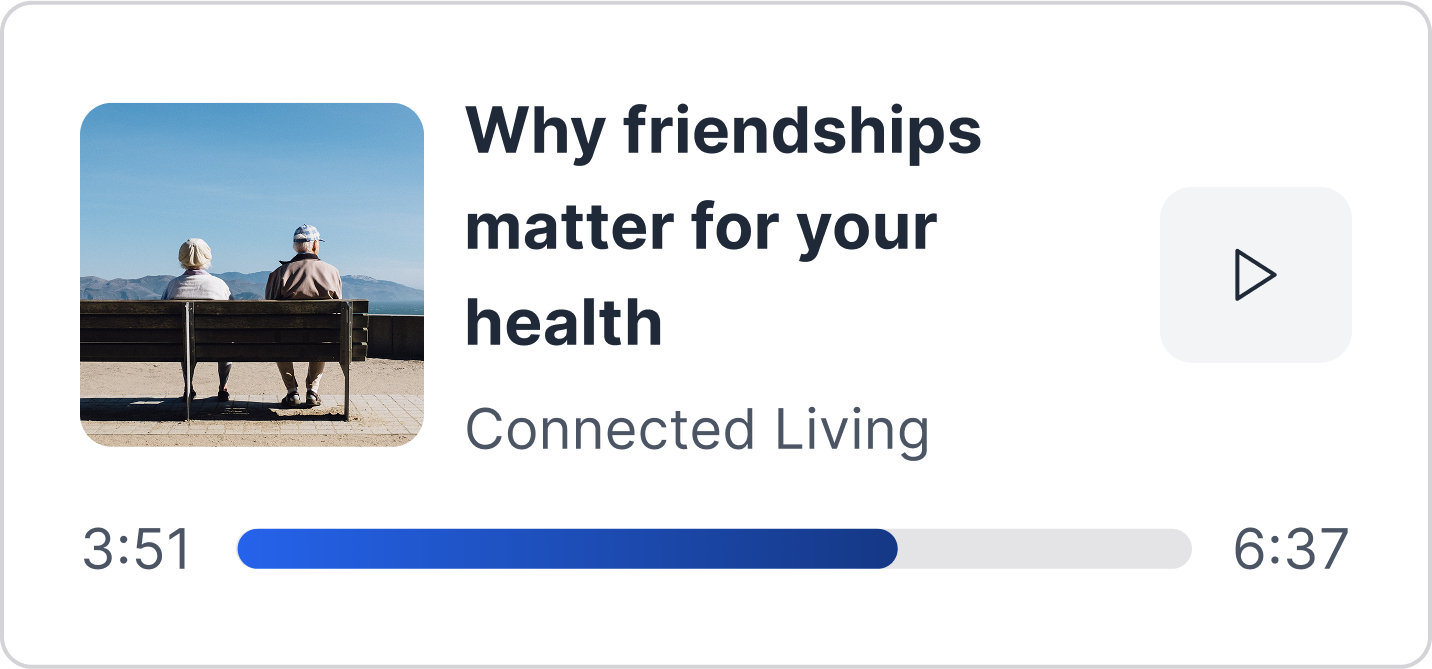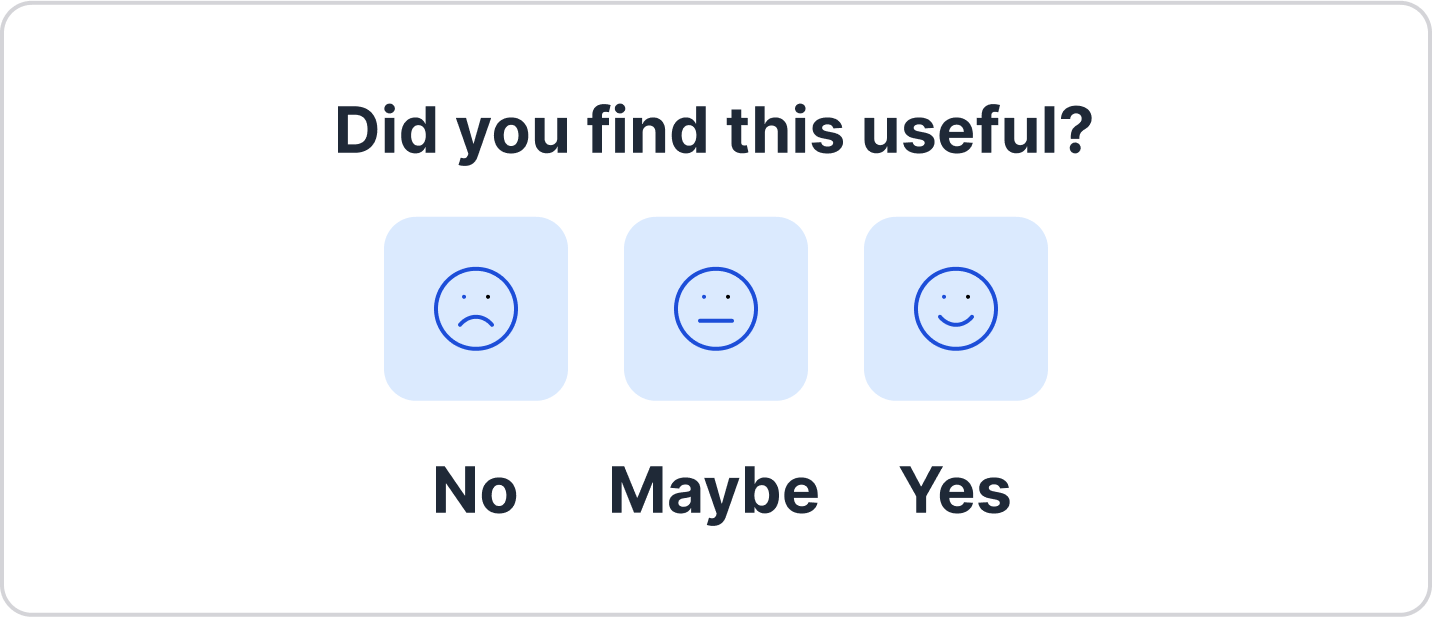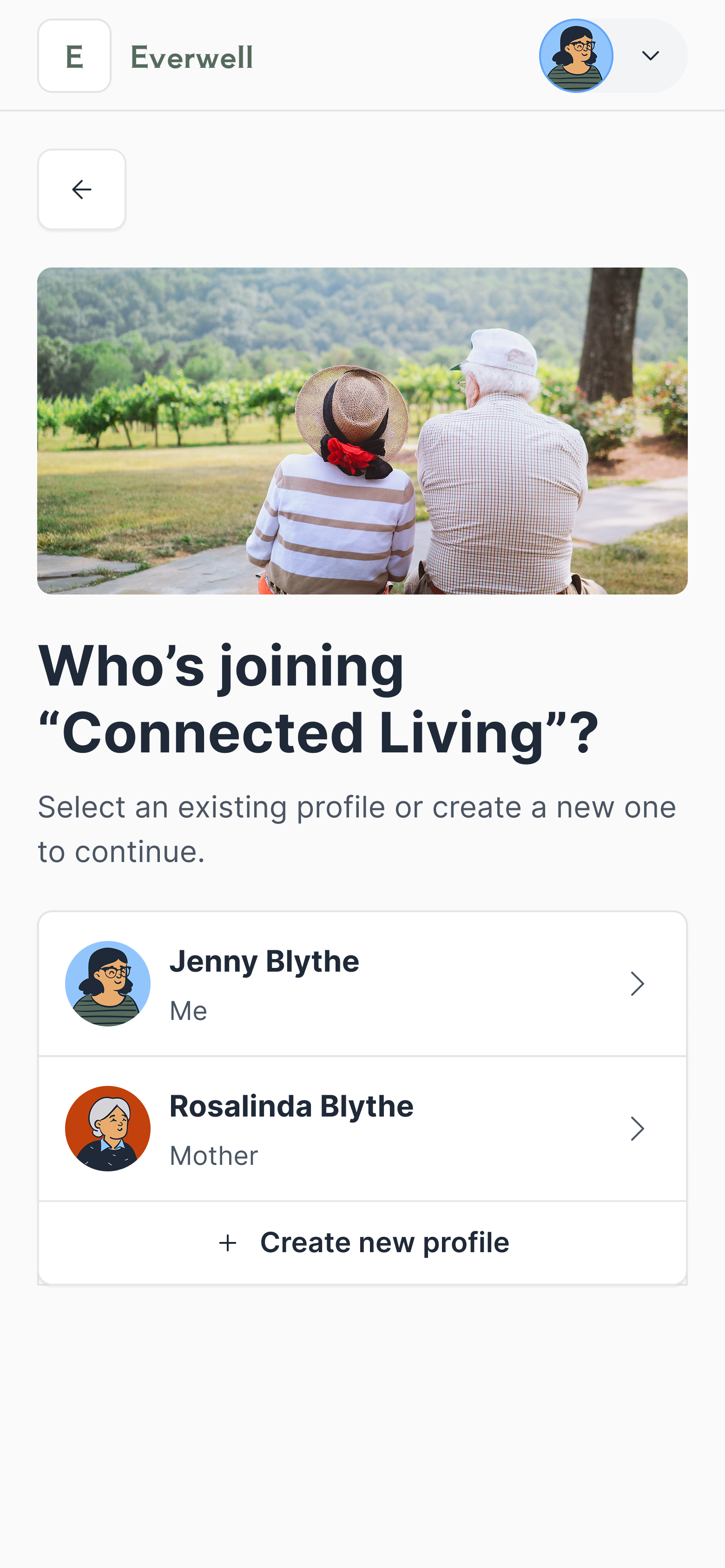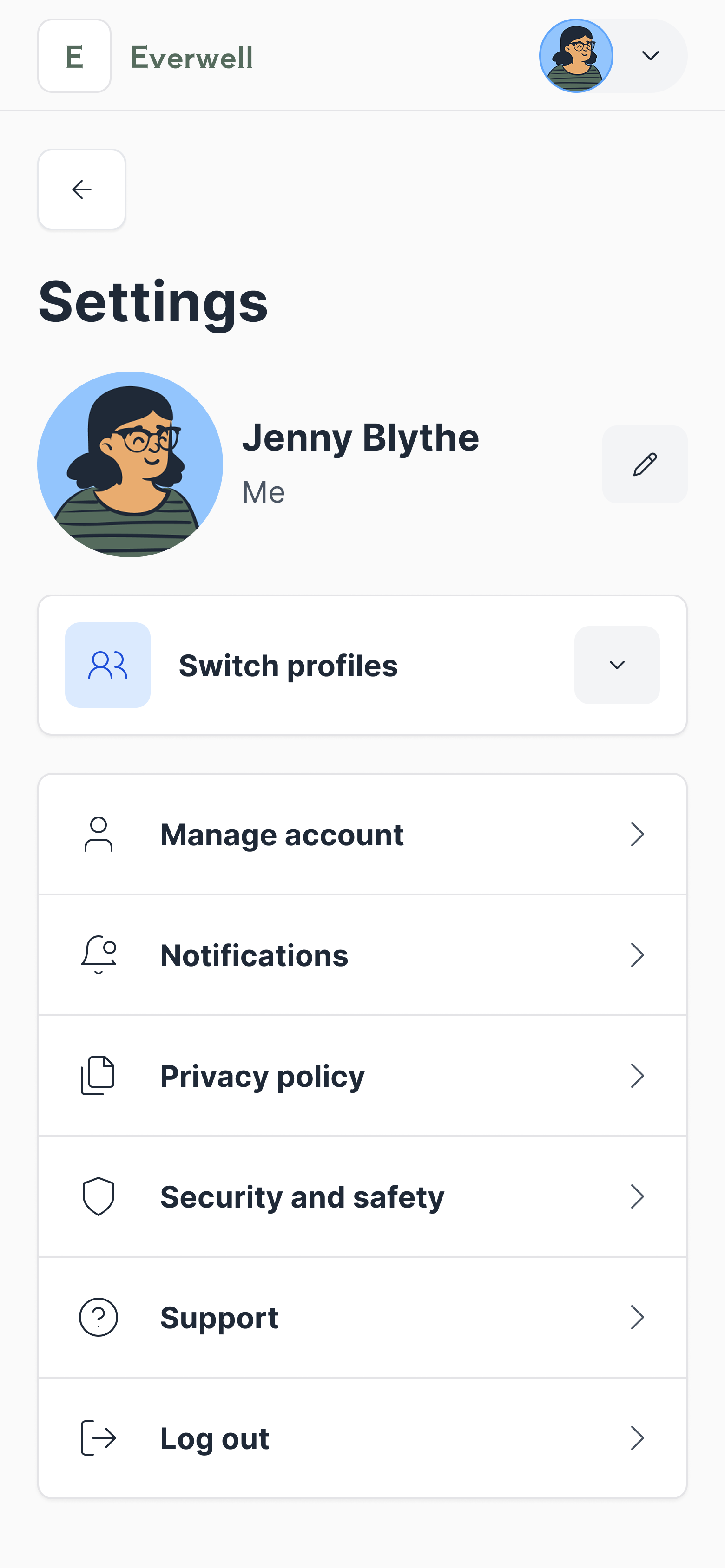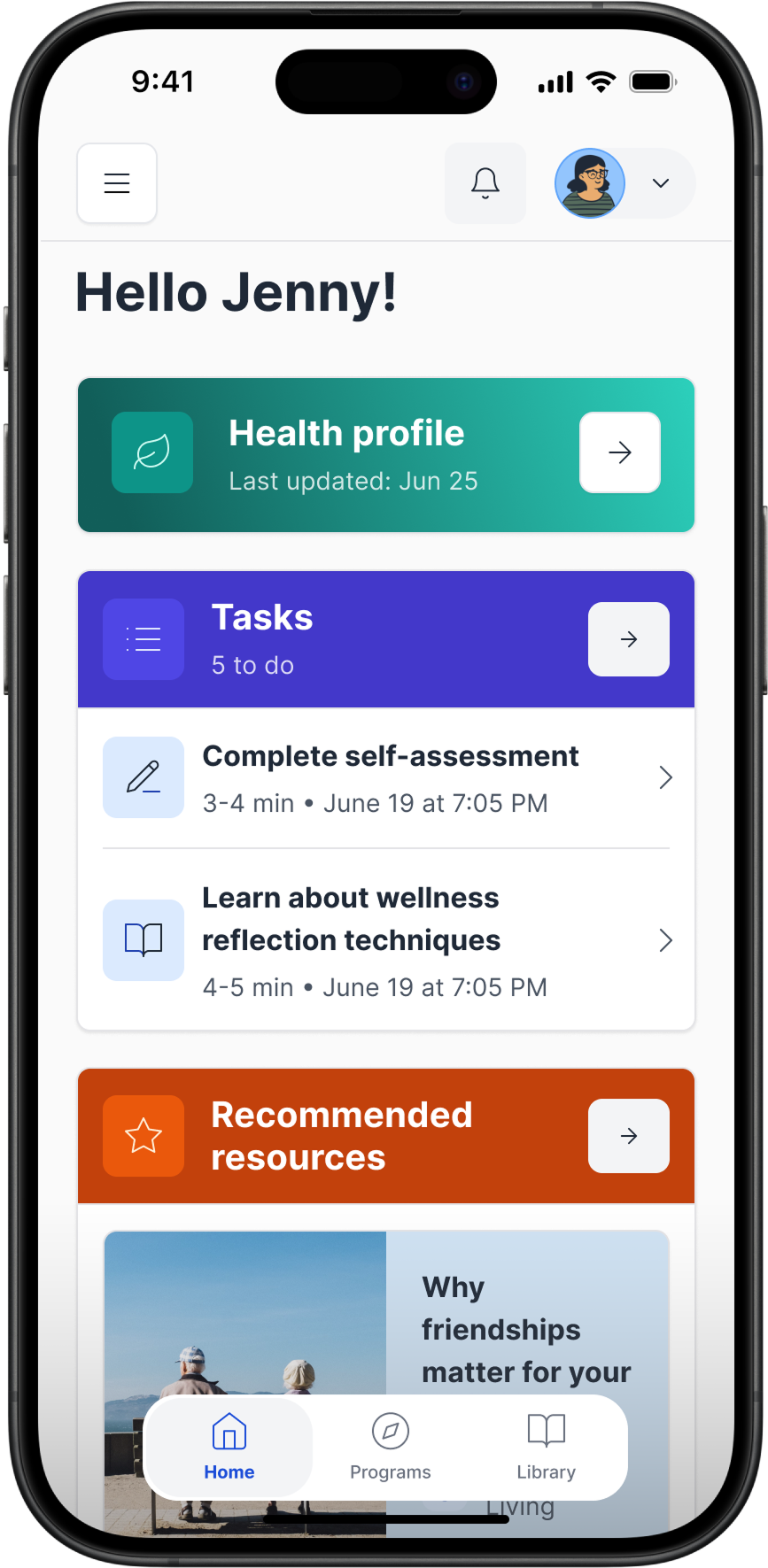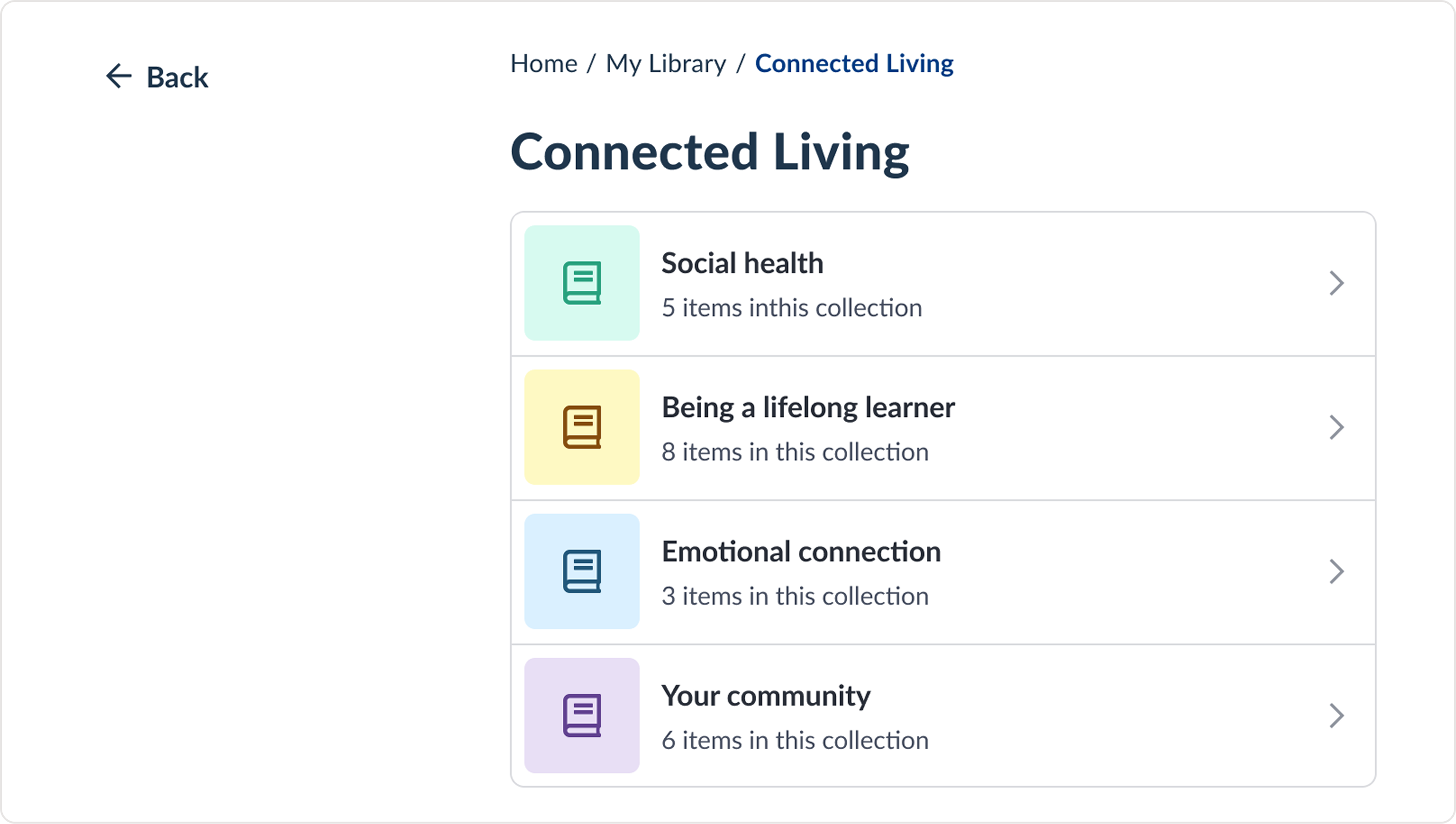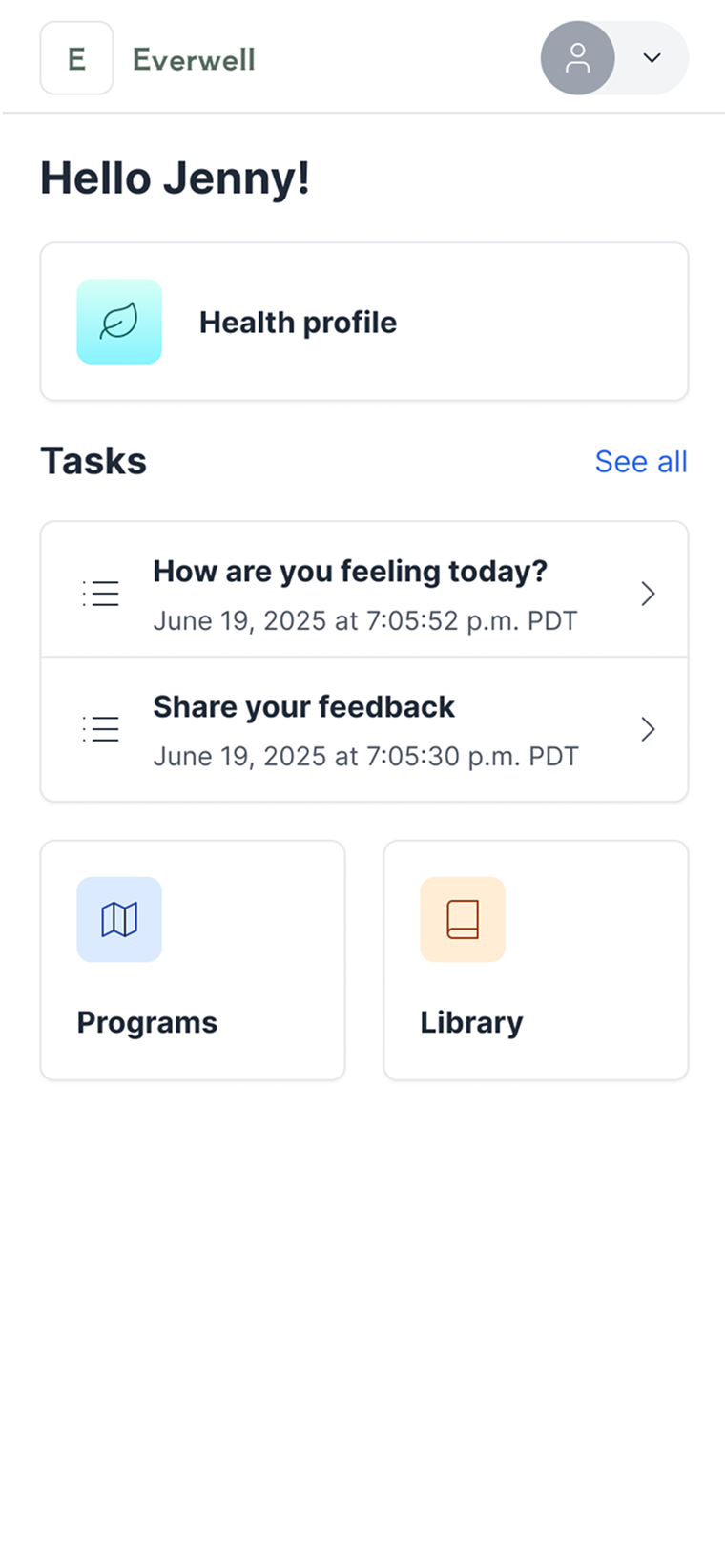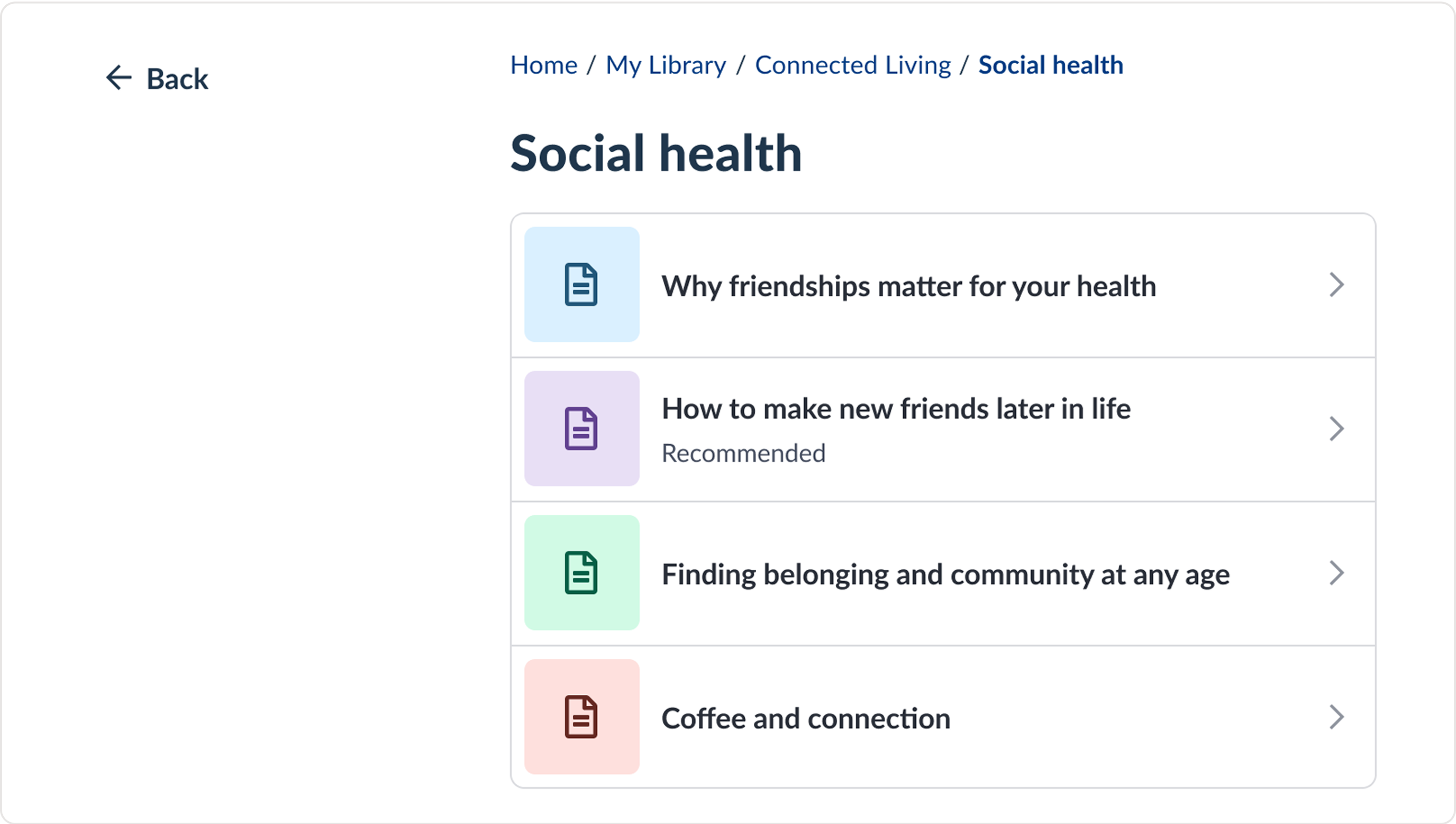- Problem
-
The app supported seniors’ health through assessments and
recommendations but had accumulated UX debt. Key screens like
the homepage and resource library were cluttered, text-heavy,
and confusing. Recommendations were hard to find, and users
struggled to re-engage with helpful content.
- Solution
-
We redesigned the core experience to improve clarity,
engagement, and accessibility. Updates included a widget-based
homepage, a visual-heavy resource library with filters,
persistent notifications for recommendations, and better
caregiver support through multi-profile functionality.
- Key contributions
-
During this project, I:
-
Led the redesign of the Resource Library and multi-profile
navigation across web and mobile
-
Collaborated closely with fellow designers to align on
patterns, share feedback, and ensure consistency across the
platform; facilitated regular design critiques and working
sessions to align with peers and strengthen design decisions
across teams
-
Conducted analog research and competitor audits to inform IA
and content strategy
-
Delivered high-fidelity, accessible designs leveraging
reusable, documented components
-
Collaborated closely with devs to ensure feasible, scalable
implementation
- Key impact
-
This redesign simplified navigation, clarified content access,
and streamlined onboarding, which helped seniors engage more
confidently with their recommended health programs and
resources.
The new experience supports caregivers
and multiple user types, making the app feel more intuitive even
for users that were less familiar with technology.
